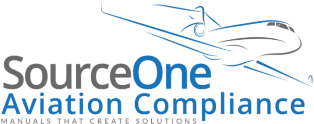Electrionic Flight Bag Training & Operations Manual
FAA Requirements for 14 CFR 91 Large Aircraft or Turbine (12,500 lbs or more) Owners and Operators for “Paperless” Cockpits Electronic Flight Bag
An (EFB) is a device that allows flight crews to perform a variety of functions that were traditionally accomplished by using paper references. In its simplest form, an EFB can perform basic flight planning calculations and display a variety of digital documentation, including navigational charts, operations manuals, and aircraft checklists. The most advanced EFBs are fully certified as part of the aircraft avionics system and are integrated with aircraft systems such as the FMS. These advanced systems are also able to display an aircraft’s position on navigational charts, depict real-time weather, and perform many complex flight-planning tasks. The training and testing requirements of AC-120-76D should be followed for 14 CFR 91 Large Aircraft or Turbine (12,500 lbs or more) Owners and Operators for “Paperless” Cockpits.
Using an iPad or other Tablet Device in Part 91 Operations
With many pilots using iPads to display approach plates, airport diagrams and other digital documentation, the FAA released InFO 11011 to clarify when authorization is needed to use the device as a Type A or Type B EFB. For Part 91 operators, authorization is not required to utilize an iPad in this capacity. If an operator plans to install a mounting device or power source, requirements found in Advisory Circular 91-78 are still applicable.
The information in AC 120-76D is directed toward certificated air carriers and fractional providers, but Part 91 operators are required as a best practice to follow the guidance for EFB training & testing programs and making the transition to a paperless cockpit and at a minimum, comply with AC 91-78. The pilot in command is ultimately responsible for ensuring that the proper aeronautical charts are available for the flight, so it is important to document and validate the reliability of the iPad during the transition. During this initial transition period the crew should carry paper backup materials.
Part 91F operators should comply with the AC 120-76D and as a minimum comply with AC 91-78 but do not need written approval. They should also validate compliance with 14 CFR 91.503 (flying equipment and operating information for large/turbine powered aircraft) and 14 CFR 91.21 (portable electronic devices) when using an iPad. Part 91F operators must also have a secondary system in place to augment their primary iPad. The secondary system can simply be a backup iPad or alternate EFB.
iPad Approval Process for FAA Certificated Operators
Before using an iPad as a Type A or Type B EFB, when operating under Part 91K, 125, or 135, authorization must be received from the principal inspector. The procedures for obtaining this approval are contained in FAA Order 8900.1 and AC 120-76D. OpSpec/MSpec paragraph A061 authorizes the use of the iPad or any similar EFB device. At the end of a successful evaluation period, the operator will receive authorization to use the iPad in lieu of certain paper references.
During the approval process, the operator will need to develop training programs and operational procedures to utilize the EFB in compliance with FAA guidance.
The operator must show that the device has been through rapid decompression testing and noninterference testing in accordance with the AC. Apple has conducted the noninterference test and Jeppesen has conducted the rapid decompression test. Both organization s have made their compliance statement available to the public.
Jeppesen iPad Rapid Decompression Testing
Apple Noninterference Statement of Compliance
EFB Hardware and Software Classifications from AC 120-76D
The following classifications, created by the FAA, help operators determine what type of approval is necessary to use an EFB.
| Software Class | Description |
| Type A Software | The least complex software providing electronic documentation such as flight manuals but no navigational charts. |
| Type B Software | Provides all Type A information and also can display approach charts, calculate weight and balance, and deliver weather information. |
| Type C Software | Provides all Type A and B information and can display “own-ship” position on approach and airport charts. |
Includes the following:
- Ultra high quality in color
- Multiple Question Tests for Compliance with FAA AC 120-76D Testing & Training Requirements
- Temporary Revision service is included at no additional charge as applicable
- 1-5 Aircraft, each Additional Aircraft is $50.00
- 1 Custom Binder with a High Quality Color Manual (FAA copy is Digital black & white).
- Digital PDC Copy for PC, EFB, Tablet, or IPAD with a 1-time setup fee per Client for electronic document Access on Cloud Server for Storage 24/7/365
Total Cost is $CALL
